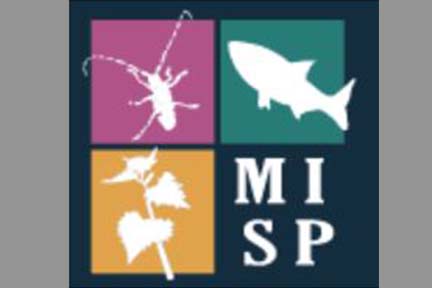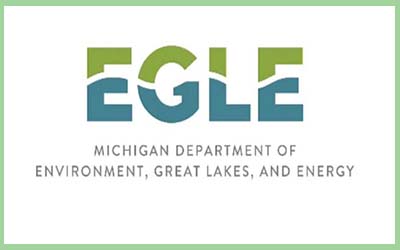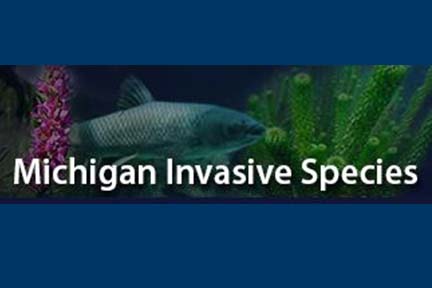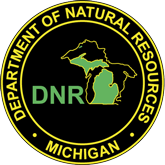Aug. 22, 2023
Contact: Contact: Joanne Foreman, 517-284-5814; Susie Iott 517-420-0473; or Bill Keiper, 517-342-4087
State’s watch list recently updated
Michigan’s invasive species watch list was recently updated to include two new species and remove another. Mountain pine beetle, a deadly threat to pine trees, and water-primrose, a fast-spreading aquatic plant, have been added to the watch list due to threats they pose to native ecosystems and industry. European frog-bit, originally listed in 2011, has been moved off the list of species of immediate concern and is now considered established in the state.
Mountain pine beetle
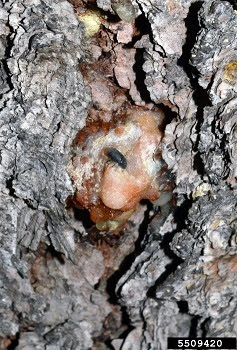 Mountain pine beetle has been characterized as the most aggressive, persistent and destructive bark beetle in the western U.S. and Canada. Hot, dry summers and mild winters in these areas have led to the beetle’s unprecedented population growth and range expansion, moving it ever closer to Michigan. Mountain pine beetle has been characterized as the most aggressive, persistent and destructive bark beetle in the western U.S. and Canada. Hot, dry summers and mild winters in these areas have led to the beetle’s unprecedented population growth and range expansion, moving it ever closer to Michigan.
Because it attacks most species of pine, the invasive beetle could have widespread effects in the state.
“White and red pines are primary species in our forest ecosystems, and jack pine serves as critical habitat for the Kirtand’s warbler,” said Susie Iott, invasive species program specialist with the Michigan Department of Agriculture and Rural Development. “If mountain pine beetle were to become widely established in Michigan, it would cause severe losses across multiple industries, including timber products, plant nurseries and tourism.” |
Because the beetle can be transported on infested pine logs, firewood and other similar commodities, MDARD issued an exterior mountain pine beetle quarantine in 2020 to regulate the movement of all firewood and any pine products with bark attached from areas of the western U.S. and Canada.
Water-primrose
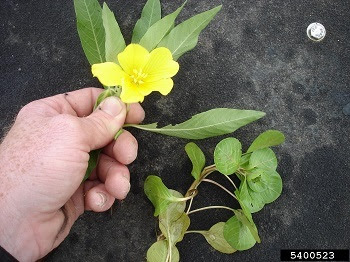 Water-primrose (Ludwigia species) is a group of very similar non-native plants, L. grandifolia, L. peploides and L. hexapetala, that are invasive in wetland ecosystems. Water-primrose is quick to establish and spread in dense mats within wetlands and shoreline areas, outcompeting native species and making boating and water access difficult. Water-primrose (Ludwigia species) is a group of very similar non-native plants, L. grandifolia, L. peploides and L. hexapetala, that are invasive in wetland ecosystems. Water-primrose is quick to establish and spread in dense mats within wetlands and shoreline areas, outcompeting native species and making boating and water access difficult.
Three known populations, two in the greater Detroit area and one in Ottawa County, indicate the species can survive and thrive in Michigan’s climate. Once established, water-primrose can be very difficult to remove, making early detection critical.
“Water-primrose is not a regulated species in Michigan. Though not common in trade, it was likely introduced through the landscape or water garden pathway,” said Bill Keiper, aquatic biologist with the Department of Environment, Great Lakes, and Energy. “Several Ludwigia species are common in trade but are not invasive and look much different than water-primrose.” |
European frog-bit
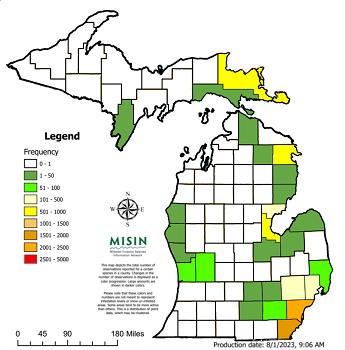 A recent review of European frog-bit, an invasive aquatic plant, determined that the plant no longer met watch list criteria due to its establishment in many areas of the state. European frog-bit still retains its prohibited status, making it unlawful to possess, introduce, import or sell in Michigan. State and local management efforts for European frog-bit will continue despite the status change. A recent review of European frog-bit, an invasive aquatic plant, determined that the plant no longer met watch list criteria due to its establishment in many areas of the state. European frog-bit still retains its prohibited status, making it unlawful to possess, introduce, import or sell in Michigan. State and local management efforts for European frog-bit will continue despite the status change.
Michigan’s Invasive Species Program continues to participate in the European Frog-bit Collaborative, which aims to improve coordination among stakeholders, establish communication networks and build consensus on next steps for management and research. Significant investments continue to support efforts, largely led by local conservation groups, to reduce the invasive plant’s spread. |
What is the watch list?
Michigan’s watch list identifies species that pose an immediate or potential threat to the economy, environment or human health. Watch list species have limited known distribution or have never been confirmed in the wild in the state. Michigan’s Invasive Species Program prioritizes watch list species and encourages the public to report potential sightings and take precautions to prevent establishment or limit their spread.
Several factors are considered in evaluating species for watch list status, including risk assessments, proximity of populations to Michigan, harmful characteristics and availability of control methods.
How you can help
 The public is encouraged to look for and report potential infestations of mountain pine beetle and water-primrose. The public is encouraged to look for and report potential infestations of mountain pine beetle and water-primrose.
Since mountain pine beetles are tiny and live under bark, they often are detected by the presence of many popcorn-like lumps of pine pitch, called “pitch tubes” on pine tree trunks. Pitch tubes can be brown, pink or white and are created as the tree attempts to push out an entering beetle. Red frass, a fine sawdust generated by the beetle’s chewing, can be visible in bark crevices and around the base of an infested tree.
Invasive water-primrose can be found along the water’s edge or floating on the water. Plants grow upright to 2 feet in height and also spread horizontally. Look for reddish stems, willow-like or spatula-shaped, dark green leaves and a showy, yellow flower with five or six petals. |
Michigan is home to several native plants related to invasive water-primrose, including seedbox, water-purslane, false loosestrife and globe-fruited loosestrife. These natives can be distinguished by their flowers, which have four or no true petals.
Reporting
When reporting watch list species, include one or more photos of the suspected species or its symptoms and provide the location of the infestation.
To report mountain pine beetle, invasive water-primrose and other watch list species:
More information on identifying, reporting and preventing the introduction or spread of watch list species is available at Michigan.gov/Invasives/ID-Report/Watchlist.
Michigan’s Invasive Species Program is cooperatively implemented by the Department of Environment, Great Lakes, and Energy; the Department of Natural Resources; and the Department of Agriculture and Rural Development.
/Note to editors: The accompanying photos are available for download. Caption information follows.
MPB: The tiny, invasive mountain pine beetle, seen here on a pitch tube, could be a threat to Michigan’s forests if it arrives. Photo courtesy of William M. Ciesla Forest Health Management International Bugwood.org.
Water-primrose: A five-petaled yellow flower and pointed leaves are characteristics of the invasive aquatic water-primrose species. Photo courtesy of Graves Lovell, Alabama Dept. of Conservation and Natural Resources, Bugwood.org
EFB map: Occurrences of invasive European frog-bit are now more widespread in lakeshore and inland counties in Michigan. Map courtesy of the Midwest Invasive Species Information Network.
Pitch tubes: A pine tree extrudes pitch in an attempt to block mountain pine beetles from entering its bark. Photo courtesy of Whitney Cranshaw, Colorado State University, Bugwood.org./ |
